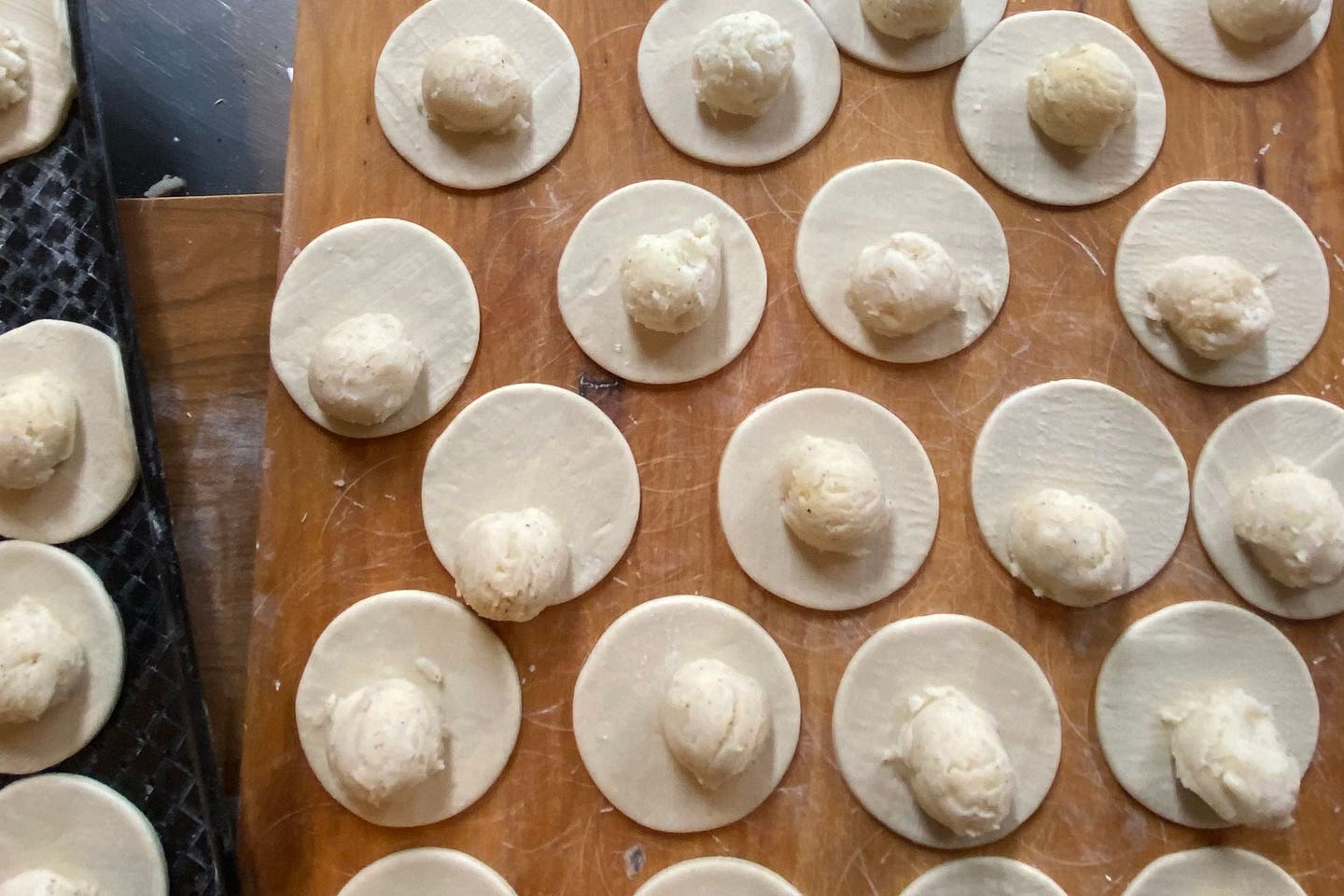
Upstate New York’s Ukrainian Community Rallies for Ukraine—One Pierogi At A Time
One church in Utica is now dumpling-making central.
Food is more than what’s on the plate. This is Equal Portions, a series by editor-at-large Shane Mitchell, investigating bigger issues and activism in the food world, and how a few good eggs are working to make it better for everyone.
“We ran out,” says Father Mike. “People showed up and said, ‘I wanted pierogies, but here’s a hundred dollars.’” Some customers then placed bigger orders for the following Friday instead.
The Very Reverend Michael Bundz of St. Volodymyr the Great Ukrainian Catholic Church in Utica, New York wears a white apron over his jeans while measuring flour into a commercial floor mixer. The basement storeroom of his parish’s school auditorium, where he prepares batches of dough, is a temporary sanctuary from the lively enterprise one flight up, where dozens of volunteers are helping to meet the recently increased demand for boiled dumplings on a weekday. “We always make some, but not at this scale,” he says, opening another 5-pound bag of all-purpose flour. “You have to laugh about it. We’ll get through.”
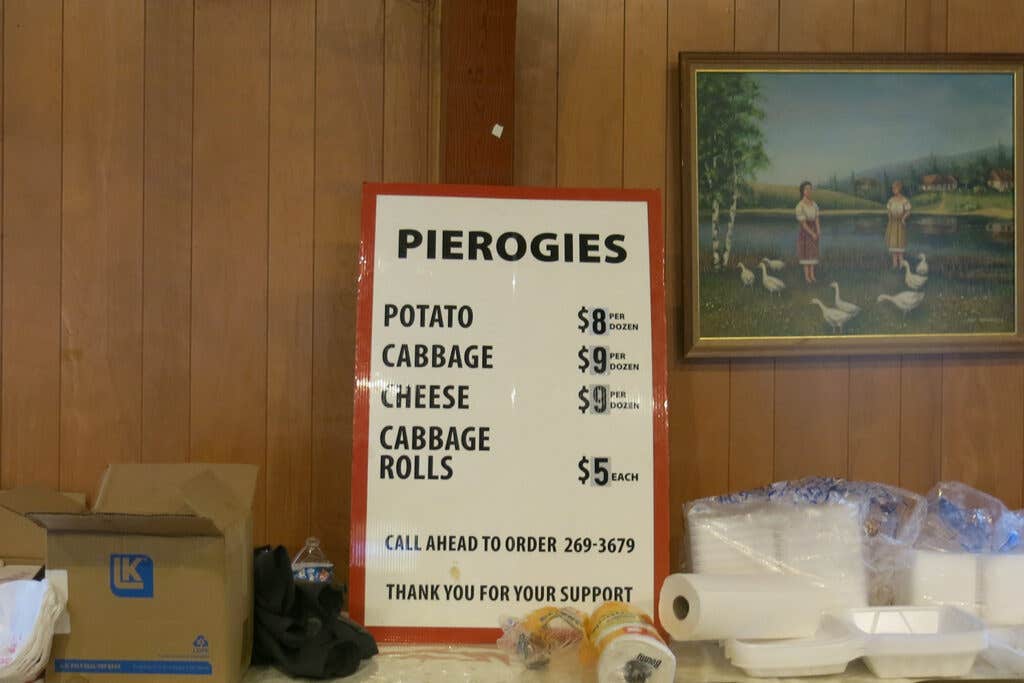
In the steam-filled kitchen, a group of men push their pastor’s dough through a large pastry sheeter, then cut out rounds by hand and scoop fillings with melon ballers. Prepared trays are moved to a serving window until 80-year-old Gloria Jakubowski can rush them out to folding tables covered with patterned vinyl cloth, where rows of church ladies wearing hairnets and plastic gloves fold and pinch each pierogi closed while debating who makes the best kielbasa in town. A plaster saint and metal cross next to the stained glass windows have been moved aside to make room for trays waiting to be sent back into the kitchen, where a cook will boil the dumplings in huge stockpots.
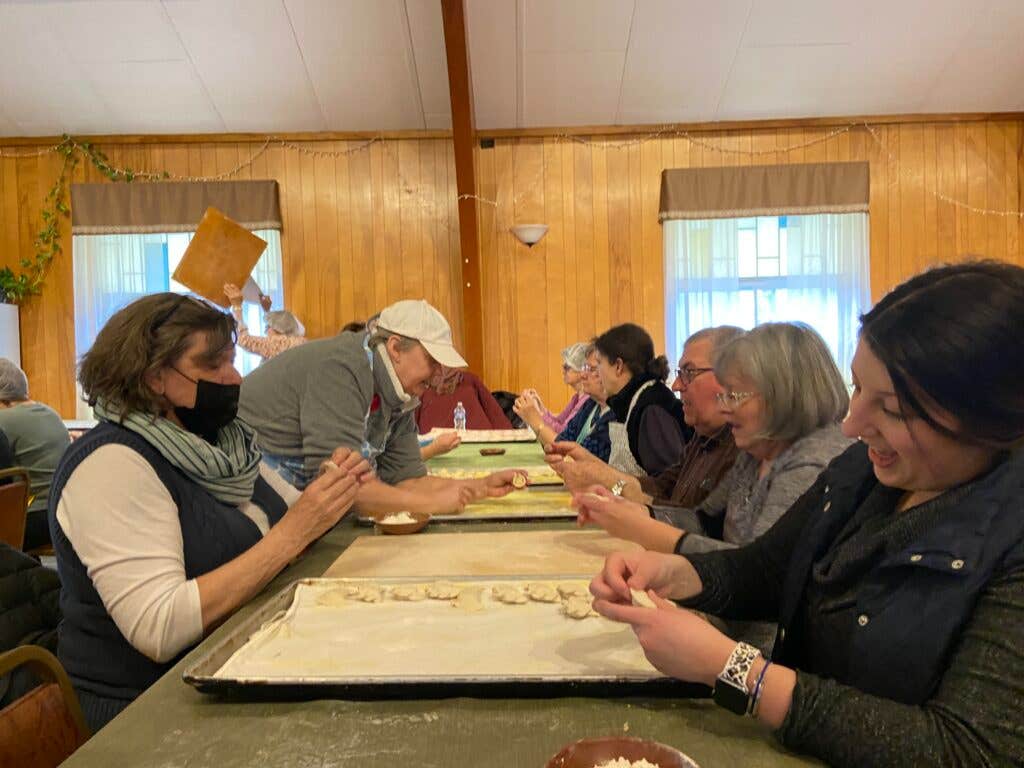
Typically, four to six volunteers turn up to prepare weekly orders, but when the war started in Ukraine, parishioners rallied. “Everybody here has family there,” says Father Mike, who immigrated to the United States in 1990 and arrived in Utica four years later. “Yesterday, we sent another $1,000 because people are starving on the border between Poland and Ukraine. They don't have nothing. When you are walking to the border, what do you wanna take with you—you know, two sandwiches?”
The Mohawk Valley in Upstate New York has a sizable Slavic community: Polish, Ukrainian, Russian, Belorusian, Bosnian. (Refugee families currently represent 25 percent of the population of Utica alone.) A monastery founded in 1930 became one of the main spiritual centers for Russian Orthodoxy outside Europe. The Bosnian Islamic Association is two blocks away from St. Volodymyr. Polish groceries sell butter lambs, as well as pisanki, or painted wooden eggs, for Easter. Everyone eats pierogies.
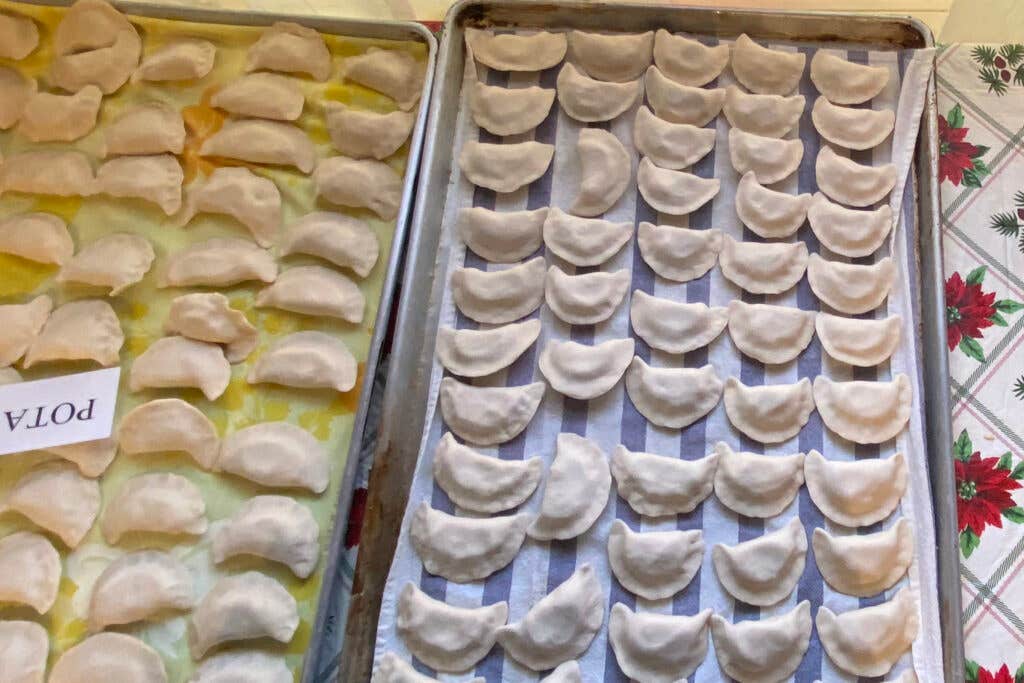
“Ukrainians call them varenyky,” says volunteer John Kosar, pushing a cart of cooked dumplings into the auditorium for packing. “As many years as I can remember, there's always been pierogi-making in our church. It's well-seasoned—years and years and years of practice putting this together. Sales helped to build the auditorium.”
The root word for varenyky means “to boil.” Ukrainians consider these dumplings a symbol of national identity. Olia Hercules, author of Mamushka and Summer Kitchens, refers to varenyky and similar Eastern European dumplings as her ultimate source of comfort. Her recipes include a wide range of seasonal fillings, such as sauerkraut-and-porcini mushrooms, pork belly, sturgeon, carp, pumpkin-and-apple, and sweeter versions with sour cherries and apricots. Born in southern Ukraine, Hercules recently co-founded the Cook for Ukraine campaign, which encourages awareness about her homeland’s cuisine and fundraises for UNICEF in regions impacted by the invasion. It has inspired other cooking initiatives large and small, including the latest Bakers Against Racism crowd-sourcing bake sale.
Toward early evening, the pace at St. Volodymyr picks up as more volunteers arrive after work. They pile their coats on chairs, tie on their aprons, and sip coffee and bottles of water. Laughter bounces off the vaulted ceiling; more fillings emerge from the kitchen. Cheese is one of the most popular, and Father Mike’s signature blend combines farmer’s cheese, cream cheese, and sharp cheddar. The church also sells potato and kapusta (sauerkraut) versions.
“In Ukraine, the tradition is eating on Sunday,” says Father Mike. “Because ladies who work have more time to pinch them on weekends. And usually, they are cooked with some butter and onions together.”
Another of the volunteers, Josephine Ambrose, sits with friends, all swiftly pinching pierogies, and shows them her mother’s technique for crimping tiny elegant parcels with scalloped edges. “Every time I pinch, I say a prayer. Pinch, pinch, pinch. Each for a life,” she says.
By the end of the night, they have prepared 12,000 pierogies.
Please consider following #CookforUkraine on Instagram or donating to the World Central Kitchen #ChefsforUkraine relief efforts.
Recipe
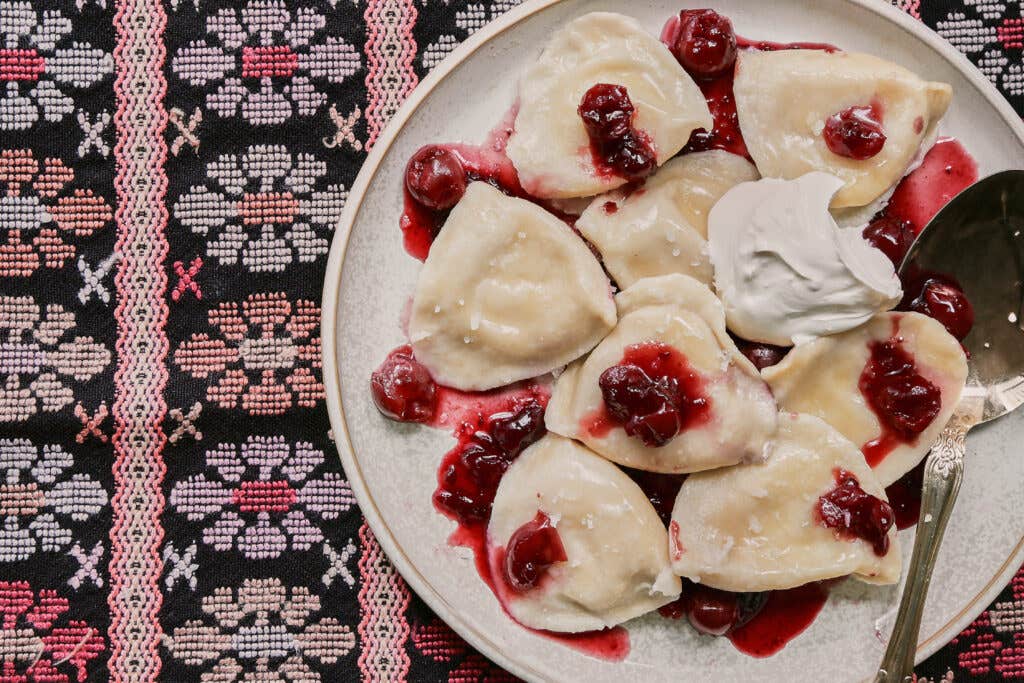
Keep Reading
Continue to Next Story










